 WEATHER
WEATHERWeather behavior during the 2014-2015 wheat growing season are described using a method to estimate water content in the soil and any possible abnormalities. We call it Soil Moisture Classification and was estimated as a monthly average along the entire wheat cycle. Values are taken from daily analysis and express deviation from normal conditions in every region and period. Moisture classification is a good indicator of climate because it summarizes relevant variables including space and time distribution of rainfall, interaction with evapotranspiration that, in turn, depends upon ambient temperature, solar radiation, winds and air humidity.
These maps are based on monthly data. They include a political subdivision that can be associated to wheat growing areas but only the provinces located in the Pampas are represented here. The sequence of soil moisture maps plus their description give readers a proper idea of the weather evolution along the wheat growing season. Agronomic considerations are described below. Usual and normal conditions are not always the most adequate for crops in every region and time of year. Winter and early spring conditions may present water deficits in areas to the west and the northeast, such as Region V North. However, the same conditions may feature water excess to the center east and southeast of the wheat growing area.
 MAY 2014
MAY 2014
The wheat growing season seemed to start under good moisture and normal distribution across the Pampas, a bit more humid in the south of the province of La Pampa, an area where wheat is not grown.
 JUNE 2014
JUNE 2014
The most relevant characteristic is soil moisture distribution that was slightly above normal across the Pampas.
 JULY 2014
JULY 2014
July was characterized by excellent moisture whether in the wheat core areas and in the wheat planted regions. These conditions are infrequent for winter crops.
 AUGUST 2014
AUGUST 2014
August featured a significant discharge of soil moisture in the west of the province of Entre Rios, due to reduced water offer in the region. In the south of the province of Santa Fe conditions were below normal but still good in the wheat growing area in the southeast of the province of Buenos Aires.
 SEPTEMBER 2014
SEPTEMBER 2014
This is a crucial month for summer crops. Rains provided good water reserves across the Pampas.
 OCTOBER 2014
OCTOBER 2014
It was a dry October in the center of the province of Buenos Aires. Most of the wheat growing area is in the southeast, water reserves kept good soil conditions.
 NOVEMBER 2014
NOVEMBER 2014
Dry conditions were more relevant in the northeast of the province of Buenos Aires, less intense to the south and west of Cordoba. Rains were important in the southeast of Buenos Aires leading to water excess and ponding in some plots.
 DECEMBER 2014
DECEMBER 2014
Very similar to November. Weather conditions did not affect wheat harvest.
 JANUARY 2015
JANUARY 2015
Very good conditions to harvest the planted wheat.
| MAY 2014 | JUNE 2014 |
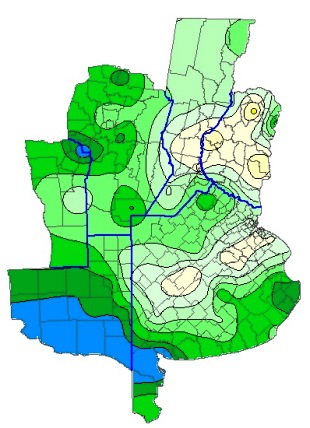
|
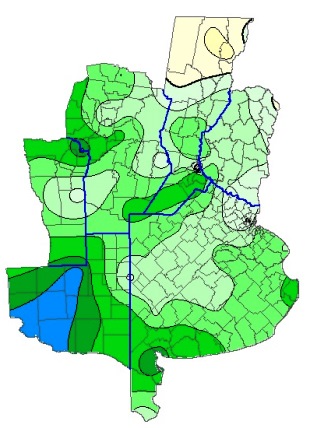
|
| JULY 2014 | AUGUST 2014 |
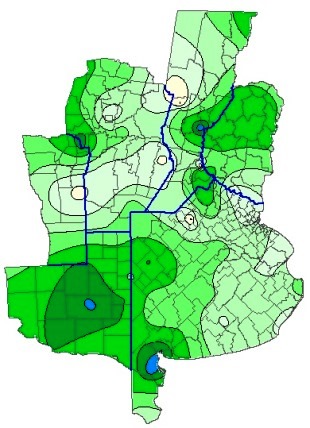
|
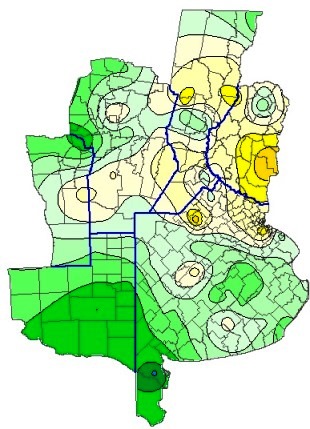
|
| SEPTEMBER 2014 | OCTOBER 2014 |
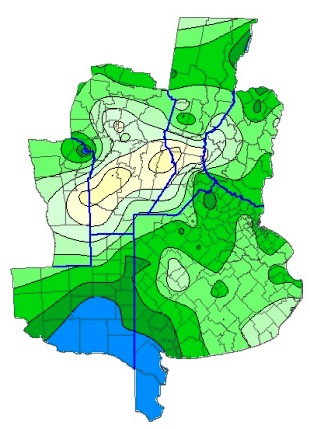
|
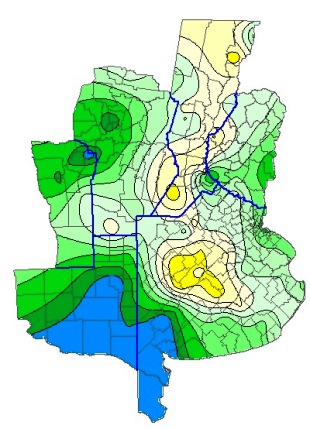
|
| NOVEMBER 2014 | DECEMBER 2014 |
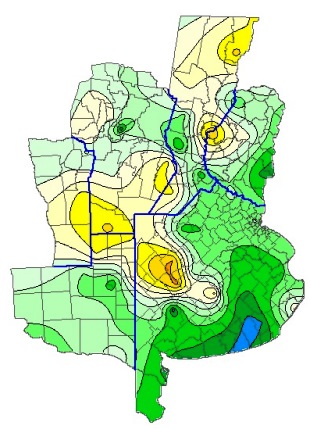
|
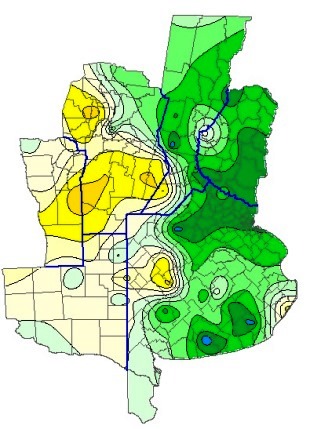
|
| JANUARY 2015 | |
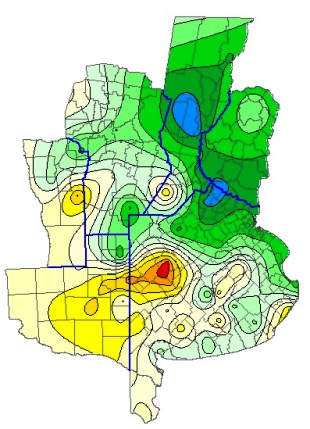
|
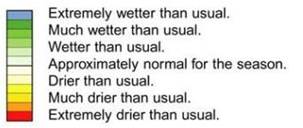
|







